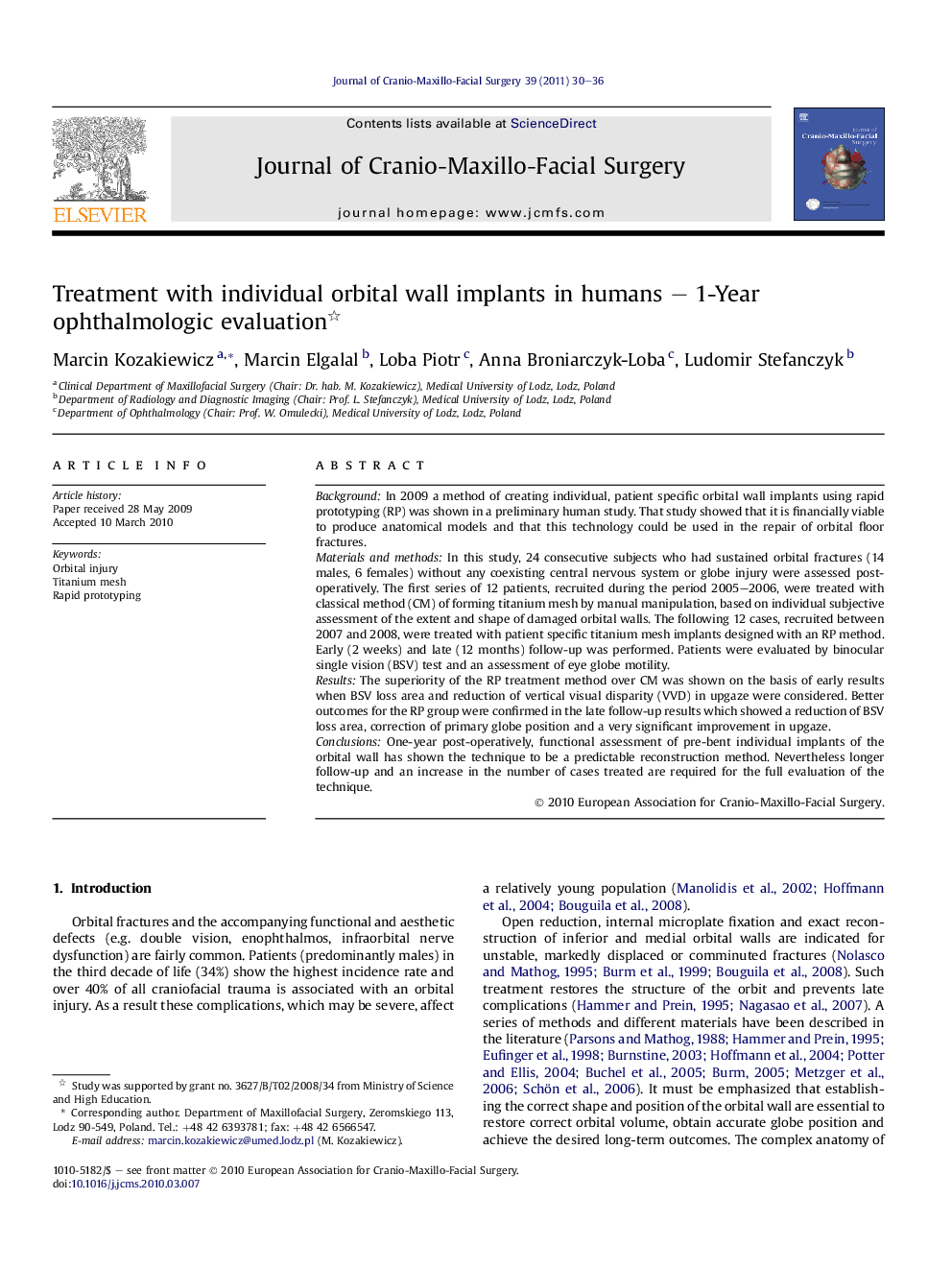| Article ID | Journal | Published Year | Pages | File Type |
|---|---|---|---|---|
| 3144043 | Journal of Cranio-Maxillofacial Surgery | 2011 | 7 Pages |
BackgroundIn 2009 a method of creating individual, patient specific orbital wall implants using rapid prototyping (RP) was shown in a preliminary human study. That study showed that it is financially viable to produce anatomical models and that this technology could be used in the repair of orbital floor fractures.Materials and methodsIn this study, 24 consecutive subjects who had sustained orbital fractures (14 males, 6 females) without any coexisting central nervous system or globe injury were assessed post-operatively. The first series of 12 patients, recruited during the period 2005–2006, were treated with classical method (CM) of forming titanium mesh by manual manipulation, based on individual subjective assessment of the extent and shape of damaged orbital walls. The following 12 cases, recruited between 2007 and 2008, were treated with patient specific titanium mesh implants designed with an RP method. Early (2 weeks) and late (12 months) follow-up was performed. Patients were evaluated by binocular single vision (BSV) test and an assessment of eye globe motility.ResultsThe superiority of the RP treatment method over CM was shown on the basis of early results when BSV loss area and reduction of vertical visual disparity (VVD) in upgaze were considered. Better outcomes for the RP group were confirmed in the late follow-up results which showed a reduction of BSV loss area, correction of primary globe position and a very significant improvement in upgaze.ConclusionsOne-year post-operatively, functional assessment of pre-bent individual implants of the orbital wall has shown the technique to be a predictable reconstruction method. Nevertheless longer follow-up and an increase in the number of cases treated are required for the full evaluation of the technique.
